Brompton P Line review - more titanium equals less weight
We took the new, lighter Brompton onto the roads and into the stations of central London to live like a commuter. No lycra was used in the testing of this bike.
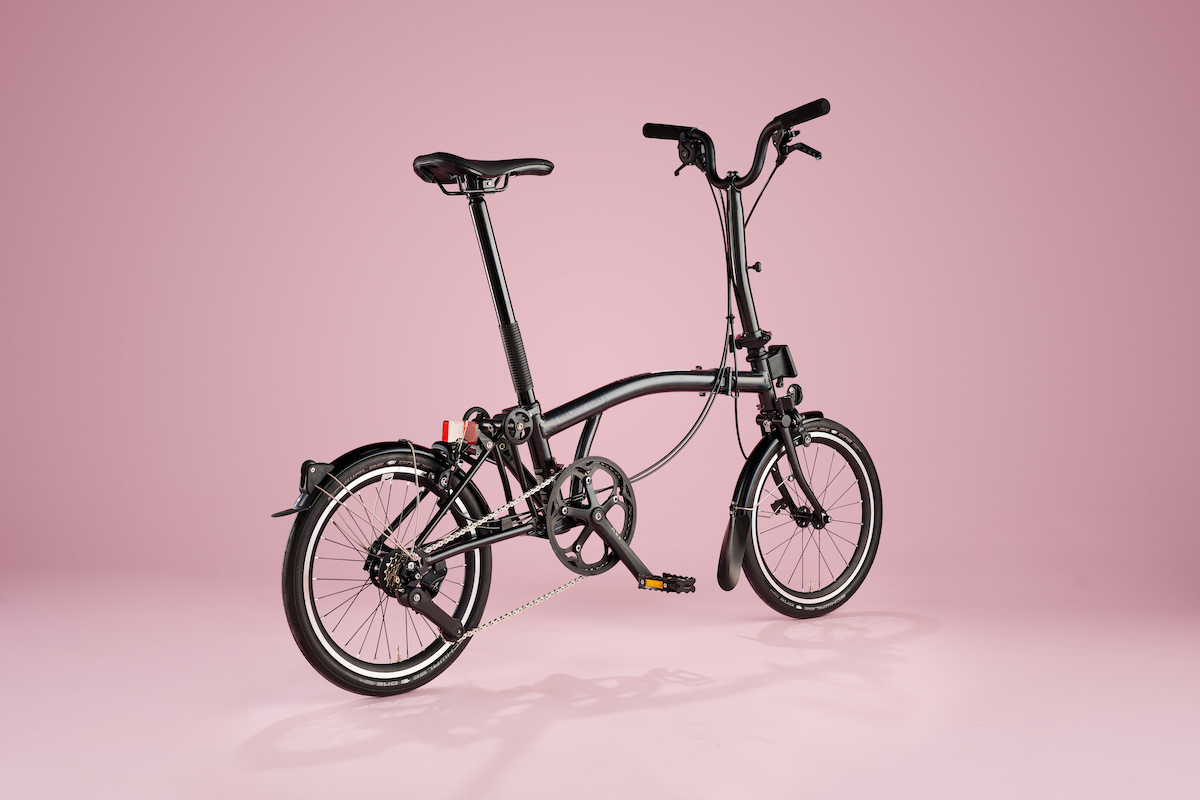
Any Brompton bike can very quickly become an indispensable part of your commute. Fun to ride, easy to take with your wherever you go and nicely put together with umpteen clever little design hacks. There are a few little practicality issues, but overall it’ll leave you wondering how you survived without it. Shedding some weight is a boon for anyone who struggles to carry 11kg of weight in one hand for long (that’s most of us), but you do have to pay for that privilege. It’s quite an outlay, but compare that to the cost of public and private transport over several years and it usually doesn’t take long for that major spend to become a saving.
-
+
Lower weight over standard Brompton
-
+
Stashes away under a desk or in cupboard
-
+
Great build quality
-
+
Fun to ride
-
+
Design classic
-
+
British build so lower carbon footprint
-
-
10kg is still heaving if walking far
-
-
Fiddly to adjust rear mech
-
-
Hard to get rear wheel out, and back in
-
-
Gears slipped a bit
You can trust Cycling Weekly.

Lightweight, great performance, responsive titanium rear triangle, this new race bike….. Hang on a minute. Let's just check that press release from Brompton once again. Yep, there it is in black and white. A new lightweight performance model of what is already one of the best folding bikes out there. If not the best.
But Brompton fans do not despair. The company hasn’t lost the plot, jumped the shark or changed directions post pandemic. The £2,100 P Line model is still very much a Brompton, but they’re updating the range that is already a popular commuter bike and including this nifty little bike which offers better handling.
And when I say handling, I don’t mean it’s great round corners, I mean due to a bit less weight it’s great to handle, as in pick up with your own hands and cart it around. Aside from riding it, this is after all the main thing you’ll be doing with this bike.
Brompton is famed as much for its folding design - that has remained largely unchanged since 1975 - than it is for being a bike. The design and mechanisms that allow it to be folded up into a shape small enough to fit in a cupboard or under a desk has earnt it a worldwide following and design icon status. And rightly so.
But there’s no getting away from it, the original Brompton is heavy. And I don’t mean heavy in an I’ll-never-get-this-Strava-KOM kind of way, I mean heavy in a ‘bloomin-'eck-I-can’t-carry-this-much-further’ kinda way.
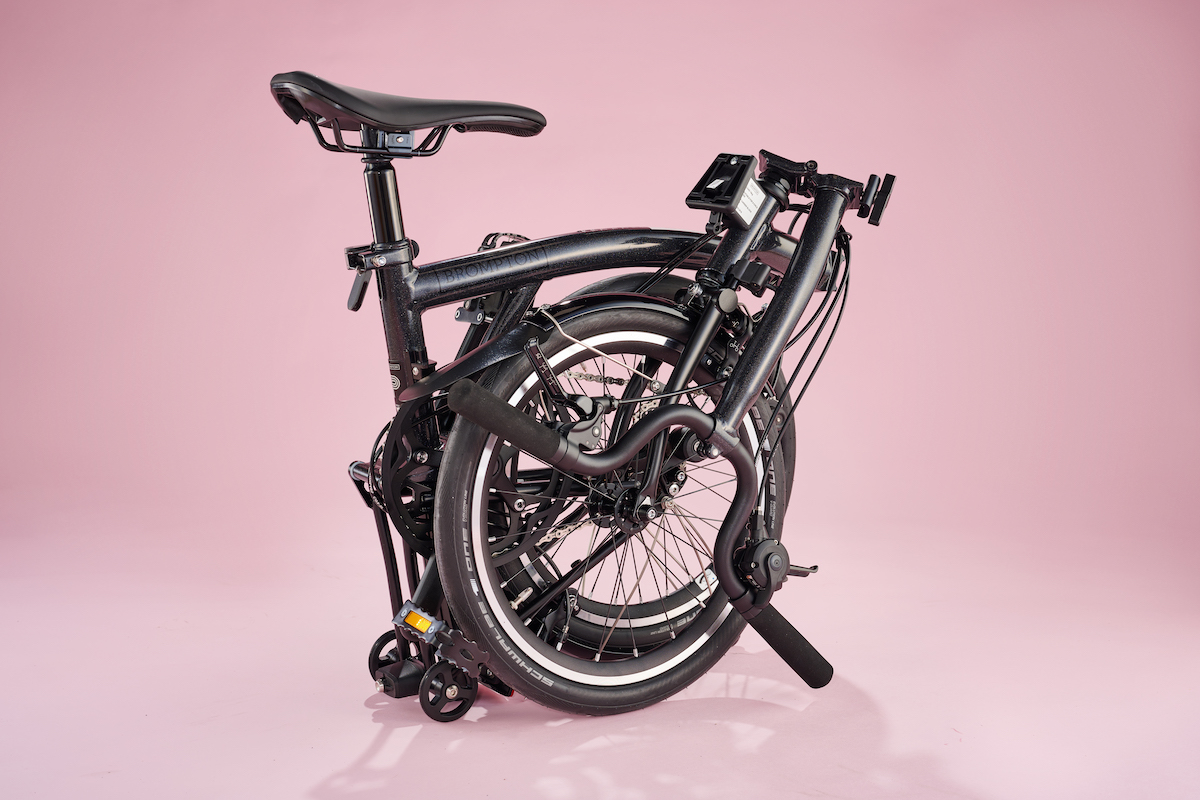
Fold it up, carry it away. Brompton's folding design is iconic
An original all steel Brompton, now called the C line (C for classic), will weigh in between 11.2 and 12.1kg depending on the spec of the model you go for. While there will be many thousands of these being happily pedalled across cities all round the world, there’s no denying your arm starts to ache when lugging it up a few flights of stairs or round the supermarket on your way home from the office.
So it’s perhaps not surprising that Brompton decided to try and lower that weight. After all the beauty of a bike like this is that anyone can ride it. Its upright riding position, low crossbar and small wheels make it the least intimidating bike you’re ever likely to see. But ask an older, smaller or for whatever reason weaker, person to carry 12kgs around with one hand - oh, and try to hold it slightly out from your body so you don’t whack your shins on it - and they will be put off.
The latest race content, interviews, features, reviews and expert buying guides, direct to your inbox!
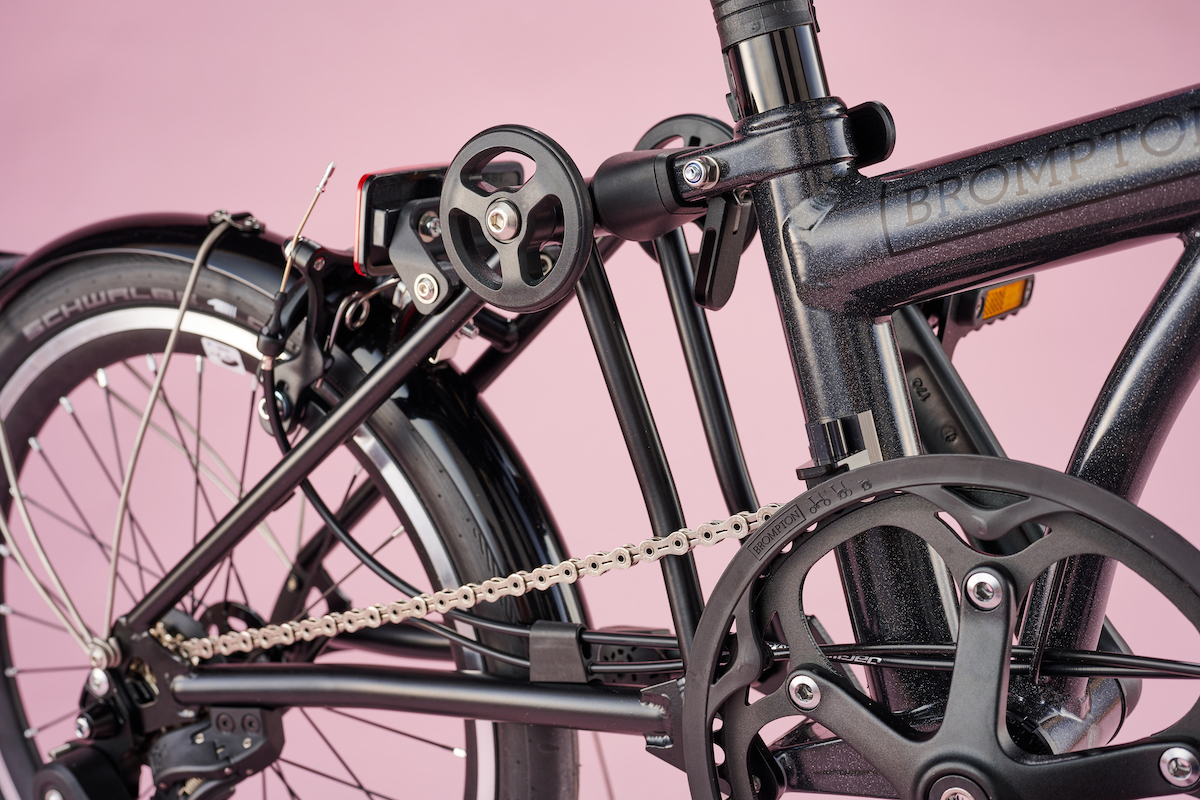
A titanium rear end has shifted some of the bike's weight
Cutting the weight
The new Brompton P Line with its titanium rear triangle slashes the weight down to 9.65kg. The frame alone is 700 grams lighter than the all steel one, a quite significant improvement. There are other weight savings from a host of other updates including a completely new set of own brand wheels. The 20 spoke front wheel (with tyre and tube) weighed 660grms on our scales and the 28 spoke rear wheel 920grams. It got a new hub too, to fit the four-cog cassette into the limited space the designers have to play with.
But ways to avoid your carry-time have been built in too.
Unlike previous models, the P Line has saddle up, roll-ability meaning you can easily wheel it around a station concourse via the saddle and manoeuvre it around commuters during the rush to the train. The folded bike is locked in place by the seat pin being pushed down through the frame to block the rear triangle from swinging back and out from under the crossbar.
The seat pin is long enough to allow it to be raised 27cm above the clamp and still lock the folding mechanism in place, and allow it to be rolled along using the three little wheels - one on top of the mudguard and two, new 54mm roller wheels at the top of the rear triangle.
But if you’re facing a flight of stairs or two you’ll have to engage your arm and shoulder muscles. There’s still a bit of heft there, but 10kg is better than 12.
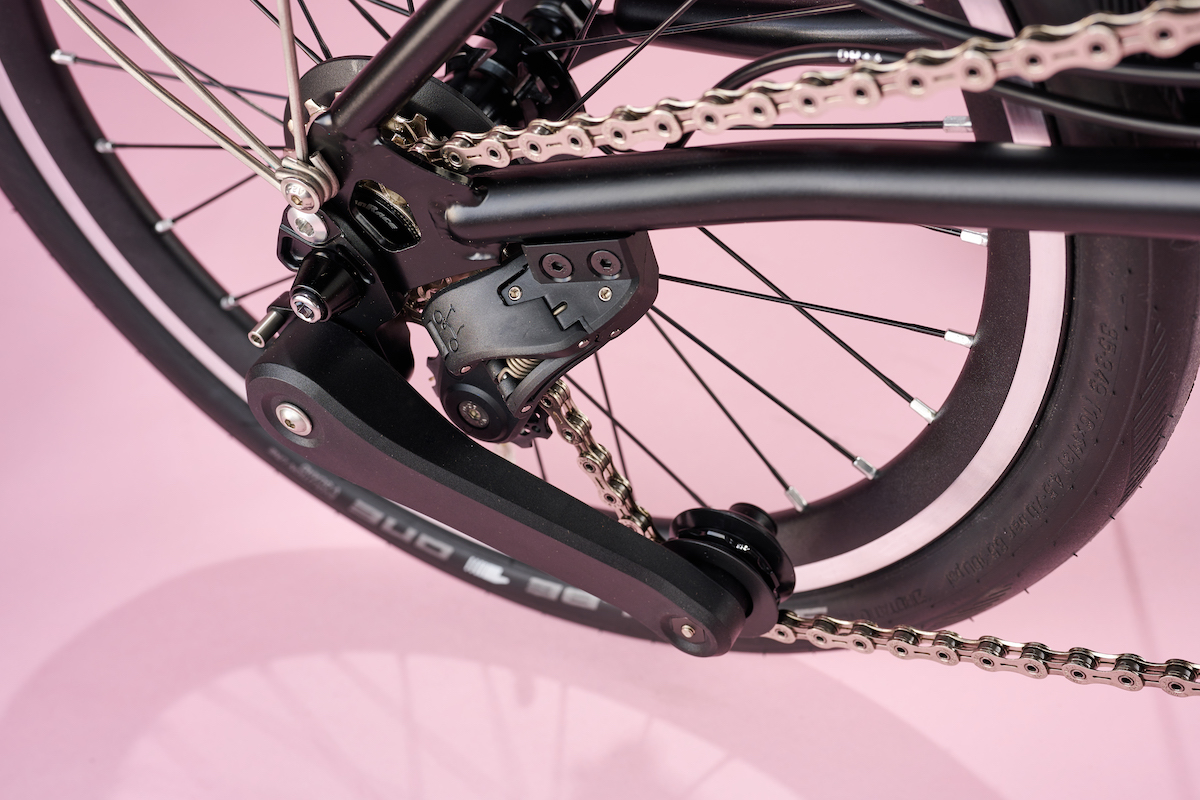
Four speed rather than 12, but we can live with that
New four speed mechanism
Moving on from weight saving to performance there’s an update to a four speed cassette with an own brand two-piece rear mech. A standard rear mech can’t be used due to the space available. So rather than the parallelogram rear mech with two jockey wheels that we’re used to, this one has a spring mechanism with one jockey wheel that is mounted too and tucked neatly under the chain stay. The second part is a fixed chain tensioner that’s mounted below the rear drop out.
It’s an ingenious little system with 11, 13, 15 and 18 tooth cogs. The chain tensioner sits in a fixed position with a roller wheel that the chain sits on sliding left and right as you change gears. I did experience the odd gear slip when we rode, and ideally I’d like a slightly smaller bottom gear, but overall it worked well.
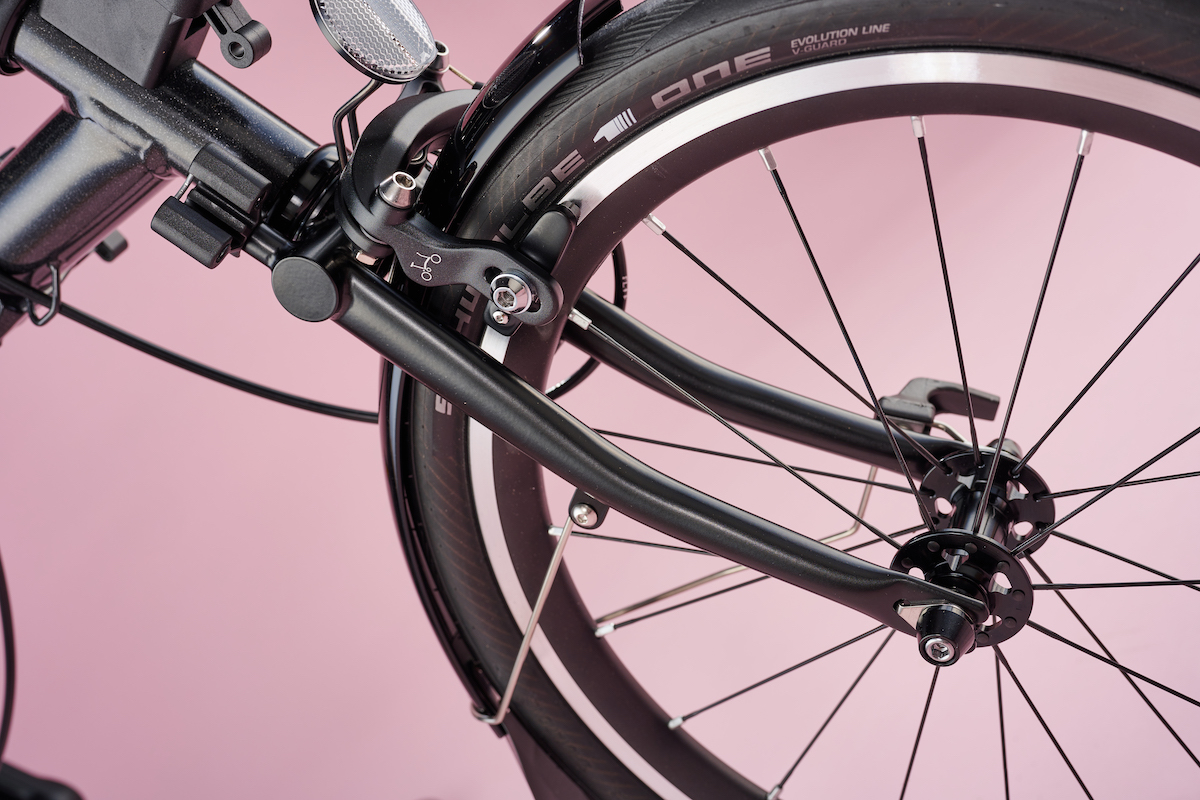
Updates galore for the British brand
Practicality for every day use
One of the features of having a bike that folds up into the size of a medium sized bag is that everything has to be squeezed into a very tight space. This, unfortunately, creates a few little drawbacks that if buying a Brompton you’re just going to have to live with. We all have our annoying little habits after all.
The first one I came across was adjusting the rear mech. Doing this is a little different to a standard rear mech, which is fine, but it’s also quite fiddly due to the space it’s squeezed into. Adjusting the mech needs a reset (of sorts). so it can only be done in a stand. If you don’t have a bike stand, hanging the bike by its saddle will work just fine. Thankfully there is a handy video on the Brompton site guiding you through it. Follow their step-by-step instructions and you should be able to get the gears running how they should. It's unlikely that this is something you'll need to do often, and many commuters would rather check in with a mechanic.
The other problem I ran into was getting the rear wheel in and out. I’ve changed more punctures than I care to remember and getting a wheel in and out of a bike frame is second nature to me, but this one took some time, a fair bit of banging and ended up with hands covered in oil. Thankfully I was at home and had tools and rags to hand. If I was doing this out on the road to change a puncture I’m not sure I could have done it. Not least because you need a 6mm Allan key to get the skewer out.
I suspect punctures aren’t too common with the 35mm Schwalbe ONE tyres with built in puncture protection, but if you do succumb a bike shop is probably your best bet. Considering most Bromptons are city dwellers, they’re probably never too far from one.
Riding the Brompton P Line
Like all Bromptons I’ve ridden, I can’t help but smile when I jump on it. All of us here might be more at home on carbon fibre, drop barred bikes with many more gears and deeper section wheels, but there is something quite joyful about jumping on a bike, in your civvies and popping down the road. Quicker than walking, less fuss than driving, and all round more enjoyable.
Journeys on a Brompton are likely to be relatively short, and no one is worried about climbing, sprinting or any of those other aspects of riding we usually write about. Handling needs to be, and is, nimble and although big hits to the rear wheel can go straight up your back, the rubber suspension block that sits between the main frame and rear triangle does take a bit of the sting out. As does the massively long seat pin.
The riding position is nice and upright, giving you good visibility in traffic and the own brand brakes are perfectly good in any situation I found myself in. All round there are lovely little touches on the bike. Most of these are to help it fold up, but there’s also the clamp at the front of the frame that holds a Brompton bag in place (the same as the fixing on the eBrompton). Mounting a bag here keeps the bike's centre of gravity low and doesn’t affect the steering at all.
So this isn’t a midlife crisis for Brompton, chasing lightweight high performance bikes. It’s a more practical, more pickupable, more manoeuvrable bike. But if they do ever release a bike with internal cables and wireless transmission I’ll start to worry.
How do you fold and unfold a Brompton?
Of course the P Line Brompton folds and unfolds in the usual Brompton way. Aficionados can ignore this section, safe in the knowledge they can do this a lot quicker than I can. For those of you who don’t know, this is how it folds and unfolds. If you can get either of these down to under seven seconds, you're doing well.
Step 1. Press and release the spring catch underneath the seat pin clamp with one hand and with the other lift the saddle to allow the rear wheel to flip under the crossbar. The bike will now stand on its own.
Step 2. Undo the hinge screw on the crossbar then, holding the bottom of the seat pin with one hand and the bottom of the vertical stem with the other, lift both so the front wheel naturally swings round and the plastic hook on the fork arm hooks over the chain stay to keep the folded bike together.
Step 3. Undo the hinge on the vertical stem and allow the handlebars to drop down and clip into place.
Step 4. Undo the seat pin clamp and lower the saddle down as far as it will go to lock it all in place. Step 5. Flip the left pedal up and over the crank.
To unfold is even simpler:
Step 1: Bang end of handlebar so it swings up and into postion. Then tighten the hinge screw.
Step 2: Undo seatpin clamp and raise saddle
Step 3: Hold the vertical stem just above the hinge with your left hand and the bottom of the seat pin with your right hand and lift the bike in the air so the rear wheel swings out and into position. Tighten the frame hinge.
Step 4: Flip pedal out. For those who know what they’re doing all this can all be done in much less time than it just took you to read the instructions. In fact the fastest ever recorded time is around four seconds. But do give yourself a bit more time if you are rushing for a train

Editor of Cycling Weekly magazine, Simon has been working at the title since 2001. He first fell in love with cycling in 1989 when watching the Tour de France on Channel 4, started racing in 1995 and in 2000 he spent one season racing in Belgium. During his time at CW (and Cycle Sport magazine) he has written product reviews, fitness features, pro interviews, race coverage and news. He has covered the Tour de France more times than he can remember along with the 2008 and 2012 Olympic Games and many other international and UK domestic races. He became the 134-year-old magazine's 13th editor in 2015 and can still be seen riding bikes around the lanes of Surrey, Sussex and Kent. Albeit a bit slower than before.